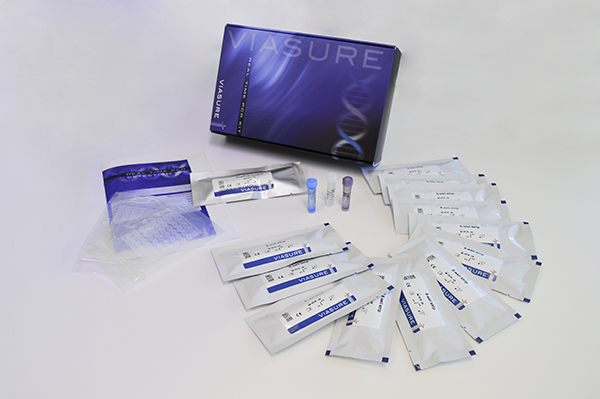
VIASURE Real Time PCR Detection Kits
High Risk Papilloma

Description
VIASURE High-Risk Human Papilloma Virus Real Time PCR Detection Kit is designed for the simultaneous qualitative detection of DNA from 14 high risk Human papillomavirus (HPV: types 16, 18, 31, 33, 35, 39, 45, 51, 52, 56, 58, 59, 66, and 68) as well as the identification of the two main HPVs, HPV 16 and HPV 18, from cervical samples (liquid base solution for cytology) of individuals suspected of infection by high-risk HPV, by their healthcare professional (HCP).
This test is intended for use as an aid in the detection of infection caused by high-risk HPV, as well as the identification of HPV 16 and HPV 18, in combination with clinical and epidemiological risk factors.
DNA is extracted from clinical specimens, amplified using real time PCR, and detected using fluorescent reporter dye probes specific for high-risk HPV DNA.
Specifications
Information
Human papillomavirus (HPV) is a non-enveloped, double-stranded DNA virus that infects human skin and mucosal epithelial cells. It is part of the Papillomaviridae family, and more than 200 genotypes have been identified, 14 of them are known as “high-risk” in a causal relation with cervical cancer, and with a significant proportion of neoplasms in the genital and oropharyngeal areas. These high-risk HPVs are: 16, 18, 31, 33, 35, 39, 45, 51, 52, 56, 58, 59, 66, and 68. HPV16 and 18 are associated with approximately 70% of human cancers cervix.
Persistent infection with high-risk HPV (especially genotype 16) can lead to the development of cervical, genital, and oropharyngeal cancer. Due to this correlation, the presence of highrisk HPV could be used as a biomarker for this type of neoplasm.
Currently, HPV molecular tests are used for cervical cancer screening in parallel with cervical cytology or as a primary cervical cancer screening test, and for screening for abnormal cell changes in the cervix. uterus, which can lead to cervical cancer.
